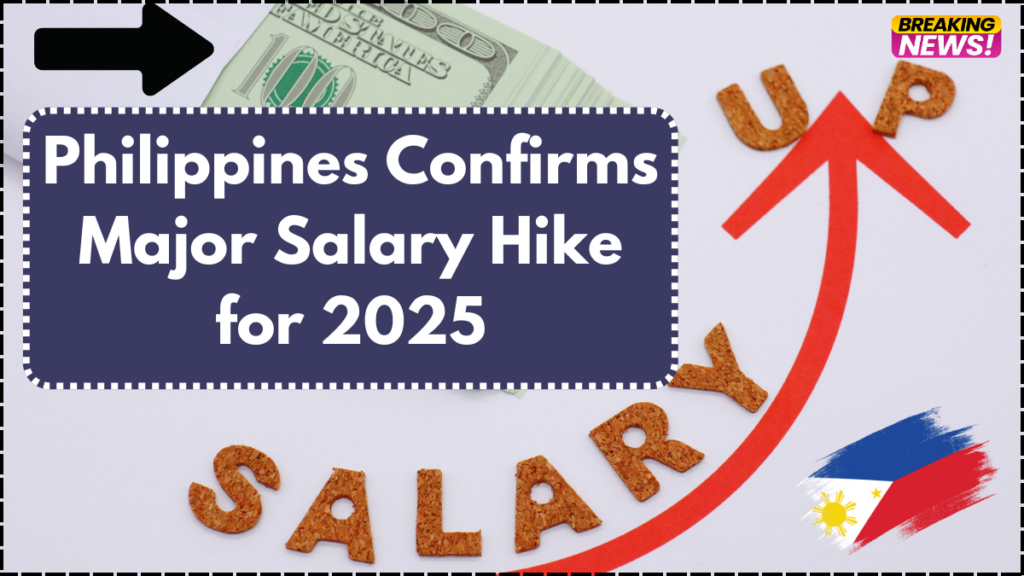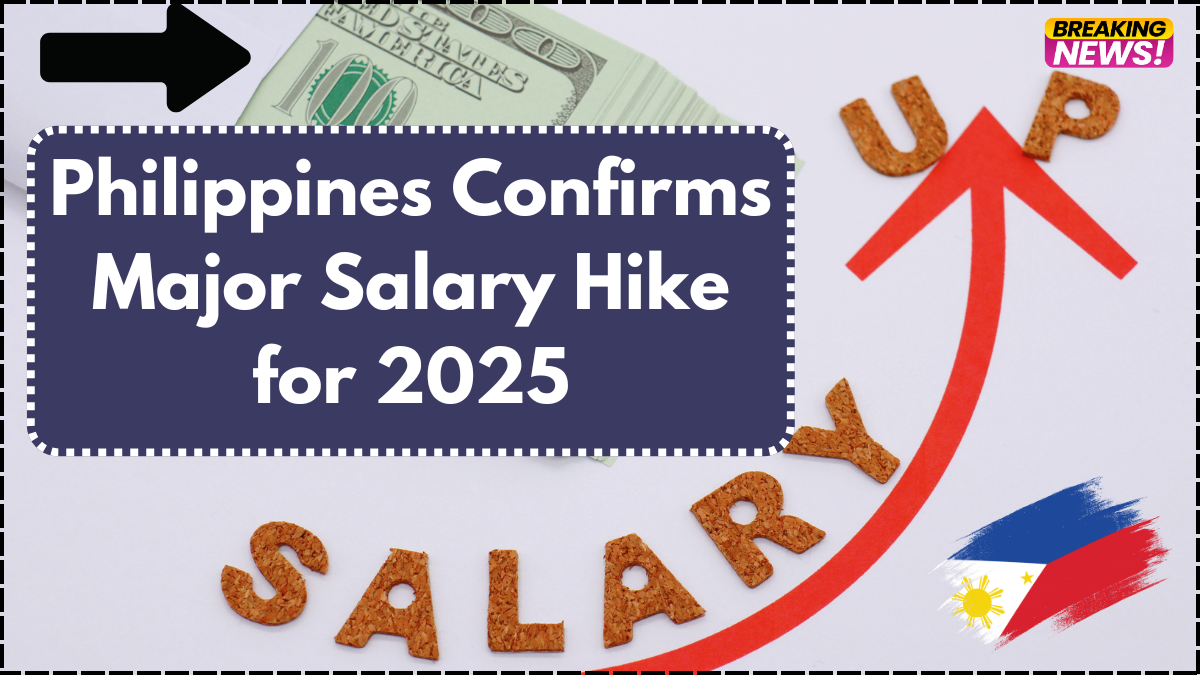The Philippine government has introduced salary revisions for both public and private sector workers in 2025. This effort seeks to improve employees’ living standards, counteract the impact of inflation, and ensure equitable pay across different industries. The proposed wage hikes are set to benefit millions of workers while supporting the nation’s economic stability.

Salary Adjustments for Government Employees
The Salary Standardization Law VI (SSL VI) outlines a structured salary increase for government employees, spread over four years from 2024 to 2027. This multi-phase approach ensures financial stability while progressively enhancing compensation for government workers.
Breakdown of Government Salary Adjustments
The salary increase will be distributed in stages to align with fiscal policies and economic conditions. The structured approach prevents financial strain on government resources while guaranteeing fair compensation for public sector employees.
Salary Grade System and New Adjustments
The Philippine government uses a Salary Grade (SG) system to classify employees based on job responsibilities. SSL VI ensures that these salary grades are periodically adjusted to match current economic realities. The salary structure ranges from SG 1, which covers entry-level positions, to SG 33, reserved for the highest-ranking officials.
For 2025, the government has earmarked approximately ₱70 billion to implement the second phase of salary increases. Additionally, a new annual medical allowance of ₱7,000 will be granted to government employees, starting in 2025, to help cover healthcare expenses.
Salary Increases in the Private Sector
Employees in the private sector are also expected to receive salary adjustments in 2025. According to industry projections, the average salary increase for private sector workers will be around 5.8%. This adjustment is intended to support companies in retaining skilled professionals while addressing rising living costs and inflation.
Regional Minimum Wage Updates
Wages in the private sector vary by region to reflect differences in living expenses and economic conditions. The minimum wage is highest in Metro Manila, where workers earn an average of ₱505.23 per day. The Calabarzon region follows with an average daily wage of ₱420.71. These wage structures are reviewed periodically to ensure fair compensation across different areas of the country.
Regional Minimum Wage Comparison for 2025
| Region | Average Daily Minimum Wage (₱) |
|---|---|
| Metro Manila | 505.23 |
| Calabarzon | 420.71 |
| Central Luzon | 414.50 |
| Western Visayas | 395.00 |
| Davao Region | 410.00 |
The wage adjustments take into account factors such as inflation, cost of living, and business sustainability, ensuring that both employees and employers benefit from a balanced wage system.
Economic Impact of Salary Increases
The scheduled salary increases for both public and private sector employees are expected to stimulate economic growth. With higher wages, consumer spending is likely to rise, boosting demand for goods and services. Businesses, in turn, may experience increased revenue, allowing them to invest in workforce development and expansion.
However, there are challenges associated with these adjustments. For businesses, especially small and medium enterprises (SMEs), higher payroll costs could pose financial difficulties. The government aims to address these concerns through strategic policies that encourage economic resilience while safeguarding workers’ rights.
Conclusion
The salary increases for both government and private sector employees in 2025 reflect a commitment to improving living standards and ensuring fair compensation. As wages rise, employees can expect better financial stability, while businesses will need to adapt to maintain competitiveness in the evolving labor market. Keeping track of these changes will be crucial for both employers and employees as they navigate the economic landscape in the coming years.
FAQs
Who will benefit from the salary increase in 2025?
Both government employees and private sector workers will see wage adjustments in 2025. Public sector employees will receive phased increases under SSL VI, while private sector workers can expect an average salary hike of 5.8%.
How will the government fund the salary increase for public employees?
The Philippine government has allocated approximately ₱70 billion for the second phase of SSL VI implementation in 2025. This budget ensures structured and sustainable wage adjustments.
Will all private sector employees receive a salary increase?
Not all private sector employees are guaranteed an increase, as salary adjustments depend on company policies, industry trends, and economic conditions. However, many businesses are expected to implement raises to retain talent and address inflation.
How does the Salary Grade System affect government employees?
The Salary Grade (SG) system classifies government employees into different pay scales based on responsibilities. The higher the salary grade, the greater the pay, ensuring fair compensation across various roles.
When will the salary adjustments take effect?
For government employees, the second phase of SSL VI will be implemented in 2025. Private sector salary adjustments will vary, depending on company policies and regional wage board decisions.
Click here to learn more
Pari is a passionate writer known for captivating stories that blend imagination and reality. Inspired by travel, history, and everyday moments, Pari crafts narratives that resonate deeply with readers.
